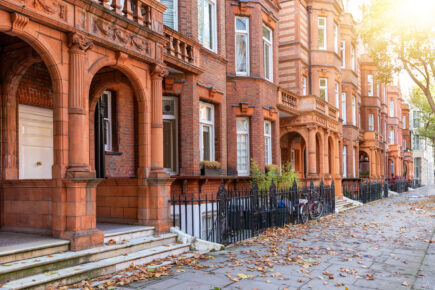In recent years a growing number of high street retailers have come to the brink of insolvency or have tipped over the edge and ceased trading. Household names such as Debenhams, Toys R Us, The Arcadia Group and Mothercare have faced huge losses and have been forced to trigger an insolvency process. A number of interlinked issues are causing this decline in the high street, including Brexit, high commercial rents, pressure from online retailers and changes in consumer spending. However, the business rate system has been repeatedly blamed by retailers as being uneconomical, unsustainable and unintelligible and a leading cause of the rising number of empty shop fronts on UK high streets.
Business rates are considered the closest thing the UK has to a land value tax, but they are not a true land value tax as the rates are levied on the value of commercial property rather than the land itself. Business rates are a tax on non-domestic (commercial) properties paid by the occupier of the property. They are based on the rateable value which reflects the annual rent for which the property could be let on the open market. The rateable value is then multiplied by the current ‘multiplier’ which is set by the government for English non-domestic properties. The multiplier increases each year in line with inflation, historically in line with the RPI, but after recent reforms the multiplier increases with the CPI.
There are various reliefs and exemptions from business rates available. Properties with a rateable value of £12,000 or below are eligible for the small business rate relief (SBRR) which brings the business rates bill to zero. There is also tapered relief for properties with a rateable value between £12,000 and £15,000. Charitable relief gives a 100% relief to properties used by charities. A full exemption is given to empty properties for a period of three months (or six for industrial properties) and vacant properties with a rateable value of under £2,900 are completely exempt from business rates.
The frequency of property revaluations has increased from every five years to every three years after recent structural reform. A revaluation in 2017 caused huge rises in rates bills for businesses across the UK, since property values had gone up considerably since the previous valuation seven years before. Conversely, it also transpired following the revaluation that some businesses in lower-value areas had been overpaying their business rates, which could have been avoided with more frequent revaluations. The view is that annual revaluations are the only way to keep rates in line with the economic cycle.
Following the 2016 SBRR reforms, 600,000 small businesses are completely exempt from paying business rates after a raise in the minimum threshold. A further 250,000 small firms have benefitted from lower bills, as they had been overpaying in lower-value areas due to inflation overtaking property values. These reforms suggest government acknowledgement of the struggles of smaller businesses in the current economy and can be seen as an attempt to lift the burden from those less well-equipped to pay.
The retail industry is concerned that the business rates system unfairly penalises property-based businesses such as high street shops, pubs and hotels. Online retailers are accused of reaping the benefits of cheaper out-of-town warehouses while undercutting many bricks-and-mortar retailers with cheaper products. To a certain extent this is unavoidable as the business rates system is a property tax, so it is inevitable that businesses which rely on property and operate out of higher value properties will be taxed at a higher rate. However, one in ten UK firms being taken to court in 2019 for non-payment of business rates shows the widespread problem; businesses are struggling to keep up with rising property values and accompanying rises in rates.
The mechanism for defining a small business for SBRR by the rateable value of the property out of which it operates has its flaws. The property value depends on its use by the business and does not necessarily reflect the value or size of the operating business. This can lead to businesses missing out on the relief because of high property prices at a certain location. Also, as the rateable value is determined in part by the size of a property, this can discourage smaller businesses from physically expanding as they may risk losing SBRR. The relief therefore does not achieve its goal of improving the high street, rather it punishes businesses for enhancing or expanding their business; creating a disincentive to innovate and develop.
Debenhams, Arcadia and Mothercare have all cited business rates and high commercial rent as reasons for store closures. They are too big to be deemed suitable for SBRR and other reliefs but are still unable to shoulder the burden of rising rates. In 2017, Harrods and Selfridges saw a 50% increase in their rates without relief – a figure that would put pressure on even the most successful of companies. According to the BBC, approximately 16 shops in the UK are closing every day as retailers are forced to restructure their businesses. These extreme figures suggest that the system is failing, rather than the businesses affected. In August 2019 a consortium of over 50 retail CEOs urged reform of business rates, declaring that the entire system needs changing for all businesses to have a chance to thrive.
For further information or advice speak to our property team today on 01753 889995 or email enquiries@bpcollins.co.uk.

















